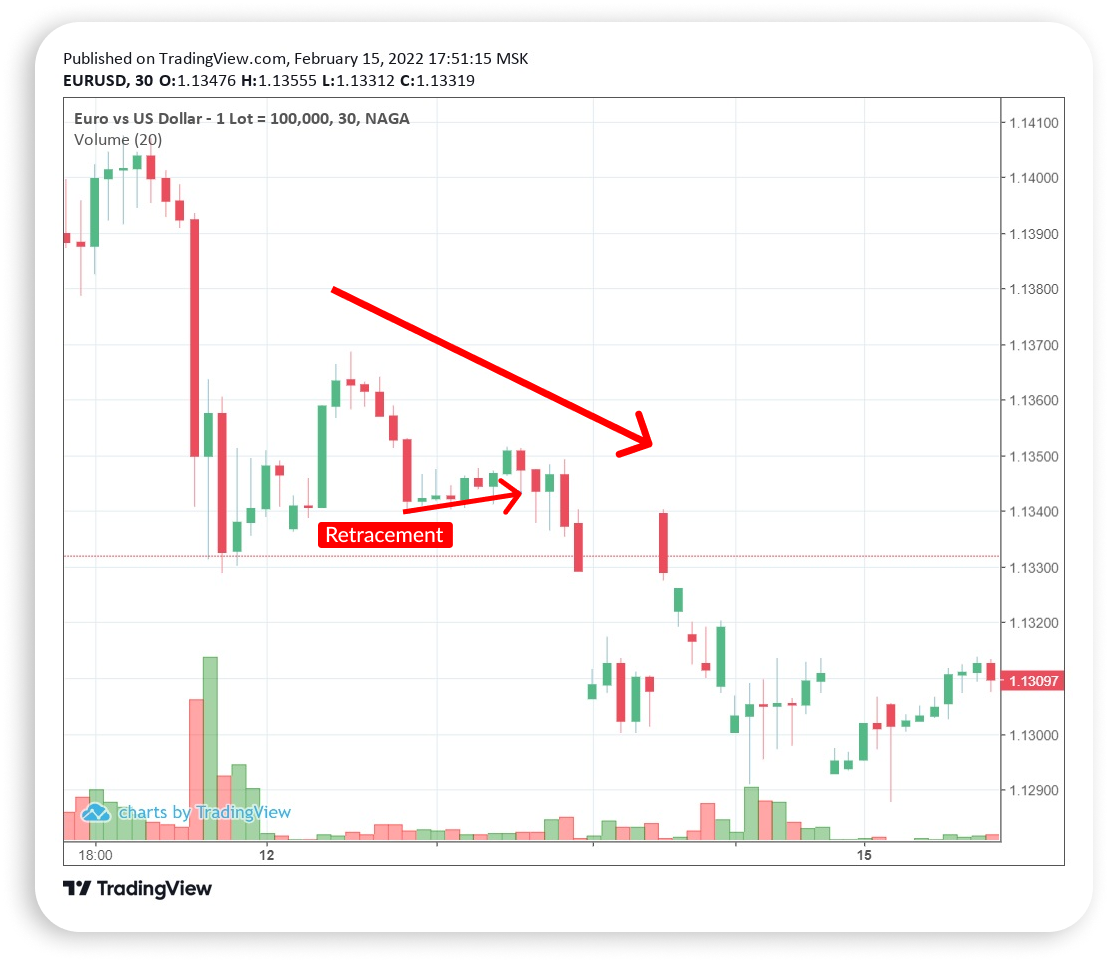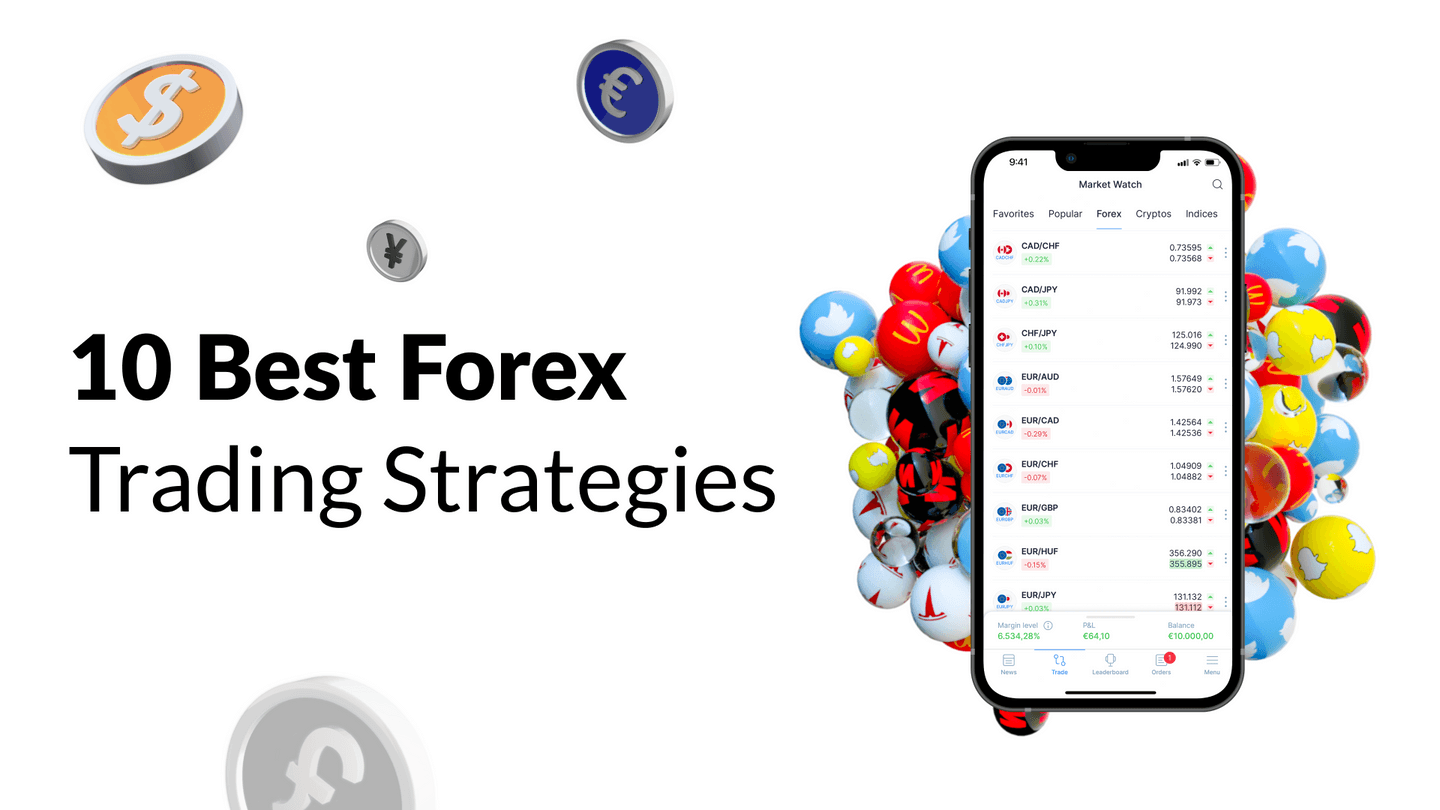Being one of the biggest and most liquid financial markets worldwide, forex attracts the attention of many investors. However, like any type of trading, it comes with a certain level of risk. Here come trading strategies that can help speculators not only avoid common pitfalls but also gain more confidence in their trading behavior.
Since there isn’t any universal strategy, investors have to look into different techniques, combining them into the individual plan that will comply best with their personality, amount of available capital, risk tolerance, etc. In this article, we have gathered the top 10 forex trading strategies, their key features, advantages and disadvantages to help you choose the ones most suitable for you.
How to Choose a Forex Trading Strategy?
Before moving to the description of common trading techniques, it’s important to define what forex trading strategy is and what criteria to consider when opting for one.
A trading strategy is a plan that helps investors make decisions about what forex pairs to trade, when to open or close positions, how much capital to outlay, etc. It is usually based on a big variety of factors such as risk management plan, technical and fundamental analysis, position holding period, different technical indicators, etc.
When it comes to choosing the suitable forex trading strategy, there are some points to consider:
- Devoted time. Not everyone is ready to spend all day trading on the forex market. Since there is a big choice of strategies, it’s possible to find the one that will be more time-efficient.
- Risk. A successful trading strategy should comply with trader personality type, their ability to accept risk, and speed of their reaction.
- The number of opened positions. When choosing a strategy it’s crucial to understand how many positions you would like to open and how often. The answer to this question will help you focus on either long-term or short-term trading techniques.
- Position size. As a rule, position size is in inverse proportion to the number of opened trades. The more trades you open the lower the position size should be.
- Type of the position. The methodology of trading depends also on whether you prefer opening short (selling) or long (buying) positions.
Best Forex Trading Strategies
Once having decided to trade currency pairs investors have to come up with a customized trading strategy, meeting best their demands. To facilitate the process of its development, they can explore the most efficient strategies common in the forex market. Here is the list of the top 10 of them.
1. Scalping
Scalping is a short-term trading strategy that usually lasts not more than several minutes. It implies opening a big number of small trades, seeking to attain multiple small profits that could accrue in significant winnings. Thus, as soon as the forex pair rises in price to cover the spread and make a small return (about 5 pips), traders close it immediately to avoid potential losses.
Scalping strategy will be suitable for those investors who can take fast decisions, are self-disciplined, emotionally stable, and have time to continuously keep track of price charts.
Pros:
- High profit potential. High frequency of trades and a strict exit strategy may help investors lock in profits for a long time distance.
- Cost-efficiency. Since scalping trades last only a couple of seconds or minutes traders don’t need to think about overnight and other fees.
- Lower risk. Small trading timeframes help investors reap their returns before the market turns against them.
Cons:
- Needs a fast reaction. Due to the short length of trade, there is no time for long considerations. This can be also the reason for the increased number of mistakes.
- Time-consuming. Scalping requires much time and concentration to analyze market conditions and find new positions to invest in.
- Limited choice. Scalping is only suitable for highly liquid currency pairs.
- Leverage. To gain more profits in scalping it’s necessary to resort to a higher percentage of leverage, which also significantly increases trading risk of losing your capital.
2. Trend Trading

Trend trading is mostly a long-term strategy that involves following the trend direction. Thus, if the market shows the uptrend investors open long positions, and conversely, if the market is going down they open short positions. However, before entering the trade it’s crucial to find out not only the trend direction but also its strength and possible life span. Here it would be reasonable to apply various technical indicators such as moving averages (MA), average directional index (ADX), etc. Moreover, trend traders usually implement stop-loss orders, protecting their investments from unexpected market moves.
Trend trading strategy fits investors who want to open fewer positions and hold them for a longer time.
Pros:
- Reduced risk. Numerous technical indicators, charts, and tools help investors define the trend and predict its possible changes.
- Time-efficiency. Being quite a slow-paced forex strategy, trend trading doesn’t require full-time devotion. Thus, it can be easily balanced with a full-time job.
- Less strict entrance/exit strategy. Since trend traders are mostly focused on significant market moves, they are not so influenced by small price fluctuations, thus, have more flexibility in opening or closing the trades.
Cons:
- Requires much learning. To become successful in this strategy, first, it’s important to understand how to identify the trend correctly, how to make use of indicators and metrics, etc.
- Psychologically complicated. It’s challenging to stay calm and consistent when entering a new trend trade. You can’t predict exactly when the trend is going to reverse, thus there is always a desire to close the trade as soon as you reaped some profit.
3. Swing Trading
Swing trading is a short- to intermediate-term trend-following forex trading strategy that usually lasts from a couple of days to some weeks. Unlike trend investors who concentrate on long-term market movements, swing traders take advantage of more prompt asset price fluctuations. Not only do they trade on the main market trend but also small reversals against it. Swing trading requires the use of both technical and fundamental analysis. Some of the commonly used indicators involve the Moving Average Convergence Divergence (MACD), the Relative Strength Index, etc.
Swing trading would be a good choice for investors who have time and desire to explore the markets, implement fundamental analysis while balancing their position timeframes (not being in a hurry and not holding them for very long).
Pros:
- Trading timeframes. Despite being mostly a short-term technique, swing trading allows investors to take their time in the decision-making process.
- Comparatively higher potential profits. Once the investor has come across a favorable swing, he has good chances to magnify his returns. Identifying a favorable swing, though, requires significant knowledge, experience and training.
Cons:
- Overnight risks. As swing traders hold their positions for more than a day, their price at the beginning of a new session could be way different.
- Psychological difficulties. As well as trend trading, this approach requires much patience and discipline in order not to exit the trade while facing temporary losses.
4. Day Trading
Day trading can’t be defined as a separate trading strategy. It is a trading style that unites many short-term techniques (scalping, range trading, etc.) that differ according to their execution time. However, all of them are not usually held for more than a day.
Day trading would be suitable for investors who are very self-disciplined and are not afraid of highly liquid forex pairs.
Pros:
- No overnight risks. Day trades are opened and closed within the same trading day.
- Cost-efficiency. Investors don’t have to pay extra fees and commissions, such as overnight fees, etc.
Cons:
- Time-consuming and stressful. Day trading takes all investors’ time, attention, and energy. To mitigate possible losses, they have to continuously keep track of market conditions, indicators, charts, etc.
- High potential losses. While gaining the necessary experience and skills, day traders have to be ready to suffer significant losses.
5. Position Trading
Position trading is a long-term technique that can last for several months or even years. Thus, investors tend to concentrate on long-lasting trends rather than on short-term market movements. This trading style may relate to passive trading, however, in contrast to the buy-and-hold approach, position traders may take advantage of both bull and bear markets. When it comes to instruments, position trading implies the use of both fundamental and technical analysis to identify the trend, stop-loss orders to control the risks, and others.
This trading strategy is not very common among forex traders, yet can fit someone who is not aimed at active trading and is good at analyzing macro market factors.
Pros:
- Less stressful. As trades can last for a long time, investors don’t need to continuously monitor them and feel worried about every small market movement.
- Time-efficient. Being a passive trading style, position trading doesn’t require full-time engagement.
Cons:
- High expenses. Holding a long-lasting position is expensive. Investors have to understand that their capital will be locked in the account for a long time. Moreover, they will have to pay additional fees and commissions.
6. Range Trading

Range trading is a forex strategy focused on the concept of support and resistance levels. Support represents the highest level that the asset price reaches before turning backward while resistance is the bottom of the price level. Thus, a trading range is a difference between these two levels over a certain period. So, when the forex pair price is expected to reach the support level, investors anticipate and buy the asset, when the price is reaching the resistance level, speculators tend to sell. To identify trading ranges investors usually turn to technical analysis and its tools.
This forex trading strategy will fit confident, decisive, and disciplined investors who can react fast when the range timeframes are tight.
Pros:
- More trading possibilities. This strategy allows investors to take advantage of non-trending markets.
- Facilitated decision-making. Once having identified the range it’s easier to decide on entrance and exit points.
- Comparatively lower risk. Since range trading is more about short-term trades focused on small profits, it comes with a lower level of risk compared to other trading styles.
Cons:
- Steep learning curve. Traders should devote much time and effort so that they could understand how to use technical indicators to successfully define the trading range.
- Costly. Range trading is usually associated with quite often investments, extra fees, and commissions.
7. News Trading
News trading is one of the popular forex trading strategies. It suggests that investors try to profit from market fluctuations caused by important global events. The news, influencing the currency pair movement, usually relates to major economic reports (GDP level, rate of inflation, etc.), announcements about interest rates, political news, etc.
Due to high market volatility, this strategy comes with high risks, thus, will be more suitable for traders who are ready to accept it.
Pros:
- High potential profits. News can make the asset price soar or drop at once. Thus, if investors can anticipate such moves, their income may surpass the profits gained from other trading strategies. However, news trading requires significant understanding of the markets and the potential effects of events on market prices.
Cons:
- Misleading information. Some market news may turn out to be fake, which can result in substantial losses if investors fail to recognize it in advance.
- Much knowledge. News traders need to stay always up-to-date and know how to interpret important market information.
8. Retracement Trading

Retracement trading is one of the effective forex trading strategies that implies that investors try to profit from temporary pullbacks in the direction of the main market trend.
There is a difference between retracement and reversal. While the latter is a huge change in the market trend, retracement is only a short-term deviation. Once having defined a change in the asset price (up or down) as a retracement, traders may hold it, expecting the return to the major trend. In contrast, if the change in the asset price is considered as a reversal, traders are likely to close their existing position and enter a new one according to the market conditions. One of the most common instruments used by investors following this strategy is Fibonacci retracements.
Pros:
- Understanding of market moves. Fibonacci and other retracement tools help investors efficiently recognize potential market movements and decide when it’s better to open or close the trades.
Cons:
- Long learning curve. Traders need much time to get a complete understanding of retracement tools to implement them effectively.
9. Grid Trading
Grid trading is a breakout forex trading approach that involves setting stop-loss limits above and below a certain asset price. This technique allows traders to take advantage of both trends and ranges. For example, when focusing on the trend, investors place buy orders above a certain price and sell orders below it. If the price moves in a favorable direction, a bigger number of orders will be called into action, thus, investors’ returns will continue growing and vice versa if the price moves in the other direction, the stop loss will be activated once the set point is reached.
Since grid trading can work efficiently without much market forecasting, it could be a perfect strategy for beginners.
Pros:
- Automation. Grid trading doesn’t require much analysis and forecasting compared to other trading styles, thus it can be easily automated.
- Easy to implement. It’s one of the beginner-friendliest forex trading strategies that doesn’t need a deep understanding of technical indicators, algorithms, etc.
Cons:
- The temptation to reap quick profits. Many traders get obsessed with grid trading opportunities and lose their patience. As a result, they often fail to stick to their predetermined risk management plan and end up with significant losses.
10. Carry Trade
Carry trading is one of the most widespread forex trading strategies. It implies that investors try to gain returns from the difference in the interest rates of two forex currencies, making the pair. This approach usually relates to currencies with high interest-rate spreads such as AUD/JPY, NZD/JPY, and others. For example, if the AUD has an interest rate of 4% and the JPY has it at 0.5%, an investor expects to profit from their difference of 3.5%.
Pros:
- Additional profits. Not only do traders could benefit from forex pair price movements but also from the accrued interest.
- Leveraged positions. Carry trading is usually based on the use of high leverage, which can magnify potential profits. Still, remember that leverage raises not only potential profits but also multiplies losses.
Cons:
- Leverage. It can be either advantage or disadvantage since both the profit and the losses are calculated based on the full position value.
- High volatility. Currency pairs used in carry trades tend to be extremely volatile, which can have a huge negative effect if the market turns against investors’ expectations.
Summary
There is a big variety of strategies for trading in the forex market. All of them have a different level of risk, distinguishing features, advantages and disadvantages. To opt for one or a number of them, investors should first analyze their needs and requirements such as trading timeframes, number of positions they’d like to open, risk tolerance, level of stress they are ready to accept, and much more.
Once these factors are defined and the techniques are chosen, it’s reasonable to explore them in the demo accounts without risking true money until getting basic experience. Last, but not least, remember that forex trading comes with not only high profit potential but also particular risks. Thus, to limit them it’s crucial to be disciplined, patient, and constantly educate yourself.


